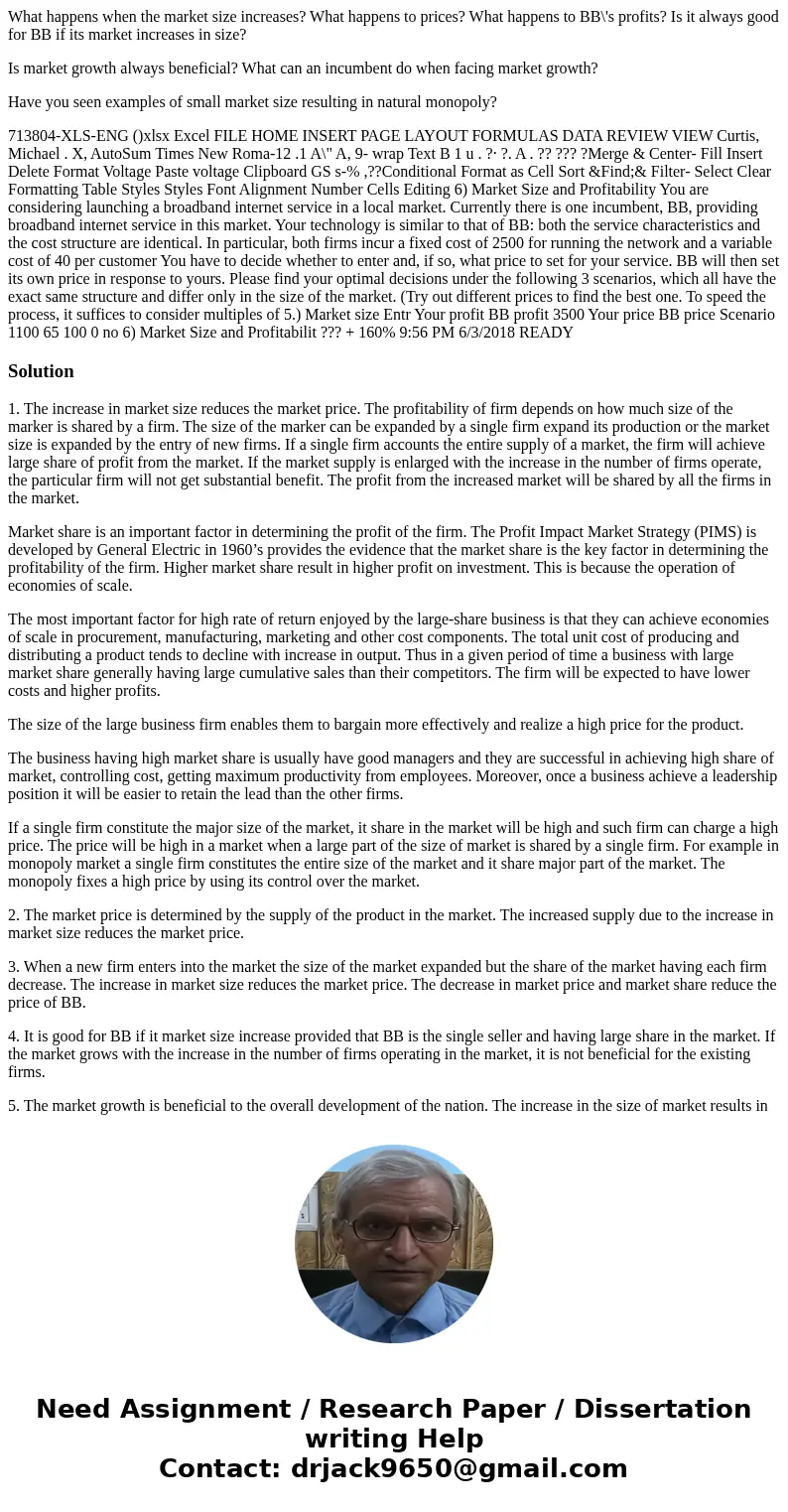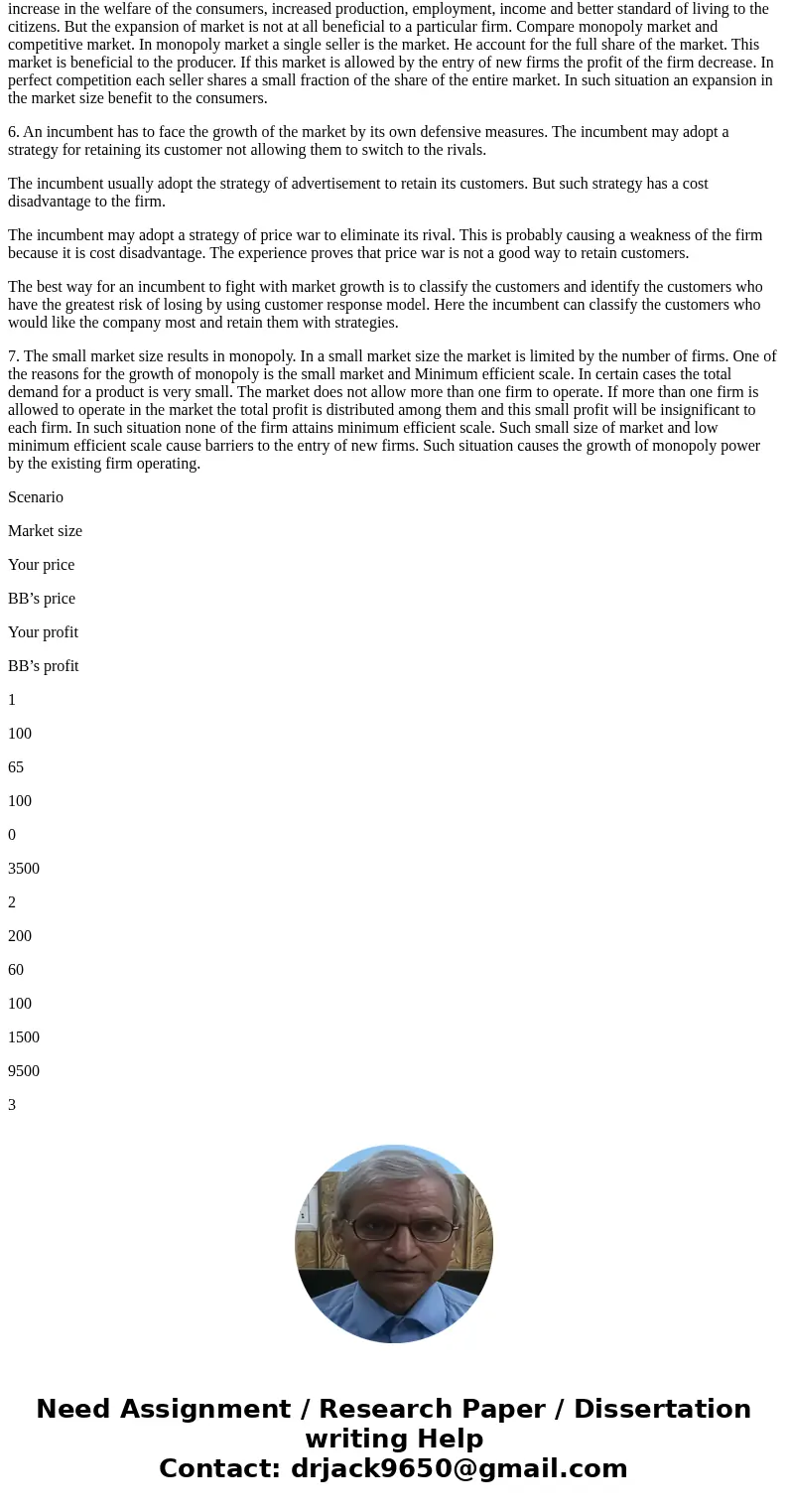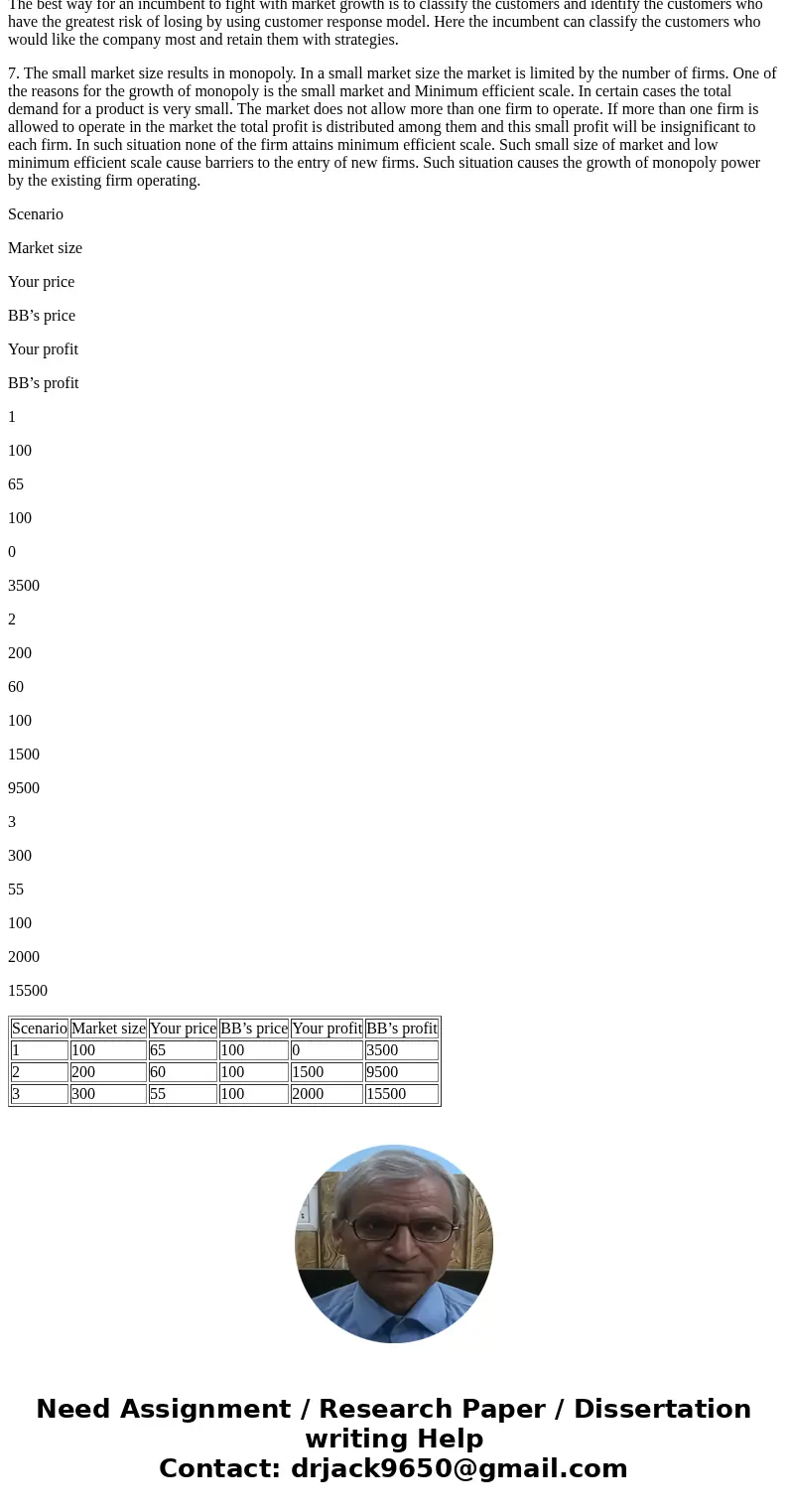What happens when the market size increases What happens to
What happens when the market size increases? What happens to prices? What happens to BB\'s profits? Is it always good for BB if its market increases in size?
Is market growth always beneficial? What can an incumbent do when facing market growth?
Have you seen examples of small market size resulting in natural monopoly?
713804-XLS-ENG ()xlsx Excel FILE HOME INSERT PAGE LAYOUT FORMULAS DATA REVIEW VIEW Curtis, Michael . X, AutoSum Times New Roma-12 .1 A\" A, 9- wrap Text B 1 u . ?· ?. A . ?? ??? ?Merge & Center- Fill Insert Delete Format Voltage Paste voltage Clipboard GS s-% ,??Conditional Format as Cell Sort &Find;& Filter- Select Clear Formatting Table Styles Styles Font Alignment Number Cells Editing 6) Market Size and Profitability You are considering launching a broadband internet service in a local market. Currently there is one incumbent, BB, providing broadband internet service in this market. Your technology is similar to that of BB: both the service characteristics and the cost structure are identical. In particular, both firms incur a fixed cost of 2500 for running the network and a variable cost of 40 per customer You have to decide whether to enter and, if so, what price to set for your service. BB will then set its own price in response to yours. Please find your optimal decisions under the following 3 scenarios, which all have the exact same structure and differ only in the size of the market. (Try out different prices to find the best one. To speed the process, it suffices to consider multiples of 5.) Market size Entr Your profit BB profit 3500 Your price BB price Scenario 1100 65 100 0 no 6) Market Size and Profitabilit ??? + 160% 9:56 PM 6/3/2018 READYSolution
1. The increase in market size reduces the market price. The profitability of firm depends on how much size of the marker is shared by a firm. The size of the marker can be expanded by a single firm expand its production or the market size is expanded by the entry of new firms. If a single firm accounts the entire supply of a market, the firm will achieve large share of profit from the market. If the market supply is enlarged with the increase in the number of firms operate, the particular firm will not get substantial benefit. The profit from the increased market will be shared by all the firms in the market.
Market share is an important factor in determining the profit of the firm. The Profit Impact Market Strategy (PIMS) is developed by General Electric in 1960’s provides the evidence that the market share is the key factor in determining the profitability of the firm. Higher market share result in higher profit on investment. This is because the operation of economies of scale.
The most important factor for high rate of return enjoyed by the large-share business is that they can achieve economies of scale in procurement, manufacturing, marketing and other cost components. The total unit cost of producing and distributing a product tends to decline with increase in output. Thus in a given period of time a business with large market share generally having large cumulative sales than their competitors. The firm will be expected to have lower costs and higher profits.
The size of the large business firm enables them to bargain more effectively and realize a high price for the product.
The business having high market share is usually have good managers and they are successful in achieving high share of market, controlling cost, getting maximum productivity from employees. Moreover, once a business achieve a leadership position it will be easier to retain the lead than the other firms.
If a single firm constitute the major size of the market, it share in the market will be high and such firm can charge a high price. The price will be high in a market when a large part of the size of market is shared by a single firm. For example in monopoly market a single firm constitutes the entire size of the market and it share major part of the market. The monopoly fixes a high price by using its control over the market.
2. The market price is determined by the supply of the product in the market. The increased supply due to the increase in market size reduces the market price.
3. When a new firm enters into the market the size of the market expanded but the share of the market having each firm decrease. The increase in market size reduces the market price. The decrease in market price and market share reduce the price of BB.
4. It is good for BB if it market size increase provided that BB is the single seller and having large share in the market. If the market grows with the increase in the number of firms operating in the market, it is not beneficial for the existing firms.
5. The market growth is beneficial to the overall development of the nation. The increase in the size of market results in increase in the welfare of the consumers, increased production, employment, income and better standard of living to the citizens. But the expansion of market is not at all beneficial to a particular firm. Compare monopoly market and competitive market. In monopoly market a single seller is the market. He account for the full share of the market. This market is beneficial to the producer. If this market is allowed by the entry of new firms the profit of the firm decrease. In perfect competition each seller shares a small fraction of the share of the entire market. In such situation an expansion in the market size benefit to the consumers.
6. An incumbent has to face the growth of the market by its own defensive measures. The incumbent may adopt a strategy for retaining its customer not allowing them to switch to the rivals.
The incumbent usually adopt the strategy of advertisement to retain its customers. But such strategy has a cost disadvantage to the firm.
The incumbent may adopt a strategy of price war to eliminate its rival. This is probably causing a weakness of the firm because it is cost disadvantage. The experience proves that price war is not a good way to retain customers.
The best way for an incumbent to fight with market growth is to classify the customers and identify the customers who have the greatest risk of losing by using customer response model. Here the incumbent can classify the customers who would like the company most and retain them with strategies.
7. The small market size results in monopoly. In a small market size the market is limited by the number of firms. One of the reasons for the growth of monopoly is the small market and Minimum efficient scale. In certain cases the total demand for a product is very small. The market does not allow more than one firm to operate. If more than one firm is allowed to operate in the market the total profit is distributed among them and this small profit will be insignificant to each firm. In such situation none of the firm attains minimum efficient scale. Such small size of market and low minimum efficient scale cause barriers to the entry of new firms. Such situation causes the growth of monopoly power by the existing firm operating.
Scenario
Market size
Your price
BB’s price
Your profit
BB’s profit
1
100
65
100
0
3500
2
200
60
100
1500
9500
3
300
55
100
2000
15500
| Scenario | Market size | Your price | BB’s price | Your profit | BB’s profit |
| 1 | 100 | 65 | 100 | 0 | 3500 |
| 2 | 200 | 60 | 100 | 1500 | 9500 |
| 3 | 300 | 55 | 100 | 2000 | 15500 |



 Homework Sourse
Homework Sourse